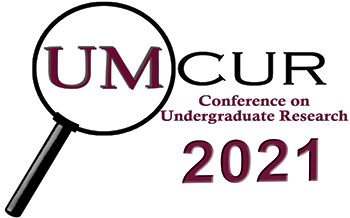Project Type
Presentation
Faculty Mentor’s Full Name
Laurie Minns
Faculty Mentor’s Department
Biological Sciences
Abstract / Artist's Statement
The ability of healthcare providers to carefully consider all presentations of illness and injury, draw upon research and knowledge to develop a list of potential diagnoses, and further investigate systems expected to be impacted by these diagnoses, is crucial for accurate identification of a condition and subsequent treatment plans to improve the welfare of patients. In order to determine a possible cause for unusual anatomic changes in multiple regions of the male cadaver used in the University of Montana’s Anatomy and Physiology lab, we performed a differential diagnosis.This research is exempt from IRB approval because the individual is no longer living. Permission was obtained from the Montana Body donation program. To generate preliminary diagnoses, we identified possible conditions associated with our initial observations of the abnormalities in the lower extremities. Further dissections of the colon, the femoral artery, and the heart were completed to evaluate the involvement of the cardiovascular and digestive systems after detecting distension of the lower intestine and a suture in the artery. We noted evidence of renal and vascular disease, prompting additional dissection of the kidneys and brain. Comprehensive assessment of the observed indications, in conjunction with subsequent research into the demographic information related to each preliminary diagnosis, supported the conclusion that stroke as a result of chronic kidney disease and atherosclerosis was the cause of death of the cadaver. This project is highly relevant in the healthcare industry as chronic kidney disease is a global health threat affecting approximately 10% of the adult population, and comorbidities are seldom investigated (Lee et al.) Additionally, the use of cadaver research, as demonstrated in this project, is an invaluable opportunity to those in and entering the medical field to enhance the comprehension of anatomy, physiology, and pathology during the educational process by allowing for the practical application of learned concepts and skills.
Category
Life Sciences
Differential Diagnosis of Abnormal Muscle Gross Anatomy of a Male Cadaver
The ability of healthcare providers to carefully consider all presentations of illness and injury, draw upon research and knowledge to develop a list of potential diagnoses, and further investigate systems expected to be impacted by these diagnoses, is crucial for accurate identification of a condition and subsequent treatment plans to improve the welfare of patients. In order to determine a possible cause for unusual anatomic changes in multiple regions of the male cadaver used in the University of Montana’s Anatomy and Physiology lab, we performed a differential diagnosis.This research is exempt from IRB approval because the individual is no longer living. Permission was obtained from the Montana Body donation program. To generate preliminary diagnoses, we identified possible conditions associated with our initial observations of the abnormalities in the lower extremities. Further dissections of the colon, the femoral artery, and the heart were completed to evaluate the involvement of the cardiovascular and digestive systems after detecting distension of the lower intestine and a suture in the artery. We noted evidence of renal and vascular disease, prompting additional dissection of the kidneys and brain. Comprehensive assessment of the observed indications, in conjunction with subsequent research into the demographic information related to each preliminary diagnosis, supported the conclusion that stroke as a result of chronic kidney disease and atherosclerosis was the cause of death of the cadaver. This project is highly relevant in the healthcare industry as chronic kidney disease is a global health threat affecting approximately 10% of the adult population, and comorbidities are seldom investigated (Lee et al.) Additionally, the use of cadaver research, as demonstrated in this project, is an invaluable opportunity to those in and entering the medical field to enhance the comprehension of anatomy, physiology, and pathology during the educational process by allowing for the practical application of learned concepts and skills.
